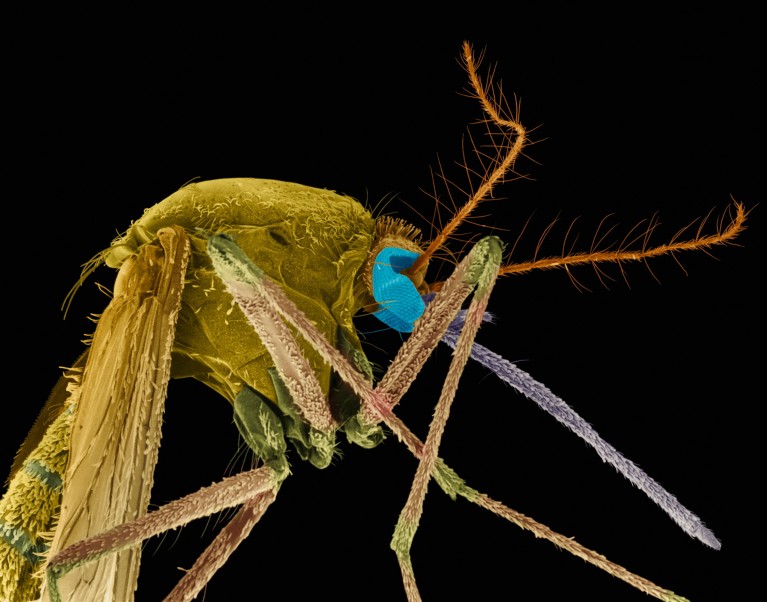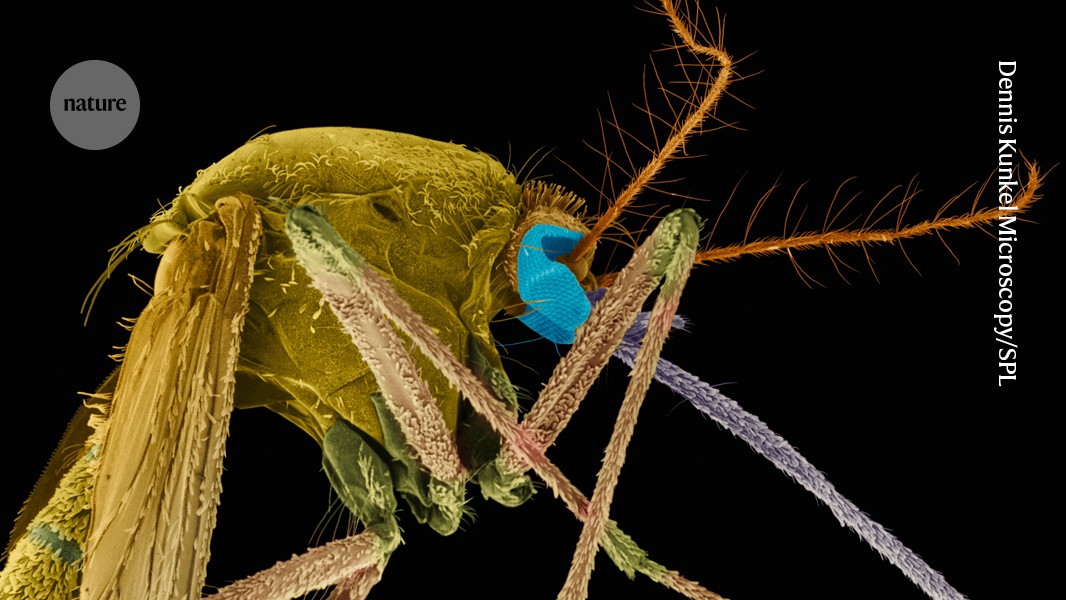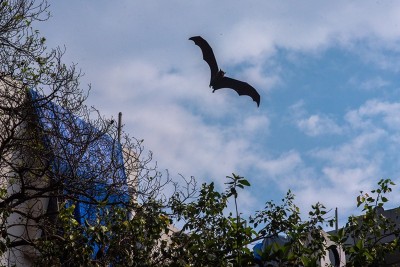
The Southern house mosquito (Culex quinquefasciatus; artificially coloured) can transmit Oropouche virus to humans, but the main vector is the midge Culicoides paraensis.Credit: Dennis Kunkel Microscopy/Science Photo Library
Once confined to the Amazon region, the mysterious virus that causes the disease called Oropouche fever has been expanding its range since late 2023, spurring international concern. The virus has already caused more than 8,000 human infections in the Americas this year, most in Brazil but also in Peru, Bolivia, Colombia and Cuba.
In July, authorities in Brazil reported the deaths of two adults from the disease — the first since the virus was identified almost 70 years ago. Brazilian officials are also investigating cases of fetal deaths and malformations that might have been caused by the virus, which has now been shown to spread from a pregnant person to their fetus. There are no vaccines or treatments targeting the disease.
Earlier this month, the Pan-American Health Organization upgraded its risk level for Oropouche from moderate to high, citing the virus’s geographical spread and the occurrence of fatal cases in a disease that has been historically known to cause mild to moderate symptoms. On 23 August, the World Health Organization published a note confirming the public health risk posed by the virus as high at the regional level, and low at the global level. The US Centers for Disease Control and Prevention has advised close surveillance of people returning from affected areas. Cases of Oropouche in the United States, Spain, Italy and Germany have been identified in travellers coming from Brazil and Cuba.
Nature spoke with Gonzalo Bello, a public health specialist at the Oswaldo Cruz Institute in Rio de Janeiro, Brazil, who has studied the lineage of the Oropouche virus currently spreading in the Americas.
What is Oropouche?
Oropouche is a virus of the genus Orthobunyavirus. It differs from other better-known vector-borne viruses like dengue, Zika, yellow fever or chikungunya because it is typically transmitted to humans by a midge, Culicoides paraensis, rather than by mosquitoes. But we cannot rule out the possibility that other vectors might be involved. [The virus has been found in other insects, including the mosquito Culex quinquefasciatus.]
For how long has this virus been around?
It was discovered in 1955 in Trinidad and Tobago, in the Caribbean. In 1960, it was first detected in Brazil from a blood sample taken from a sloth. Since the 1960s, it has been identified in outbreaks in humans more or less intermittently in the Amazon region [a vast area that spans nine countries in South America]. That’s why we say it’s a re-emerging virus, because it has been circulating for many decades at least in the Amazon, which is considered an endemic region.
Why are we only hearing about it now? Is this the biggest outbreak we’ve seen?
When it comes to the Amazon region, it is difficult to say whether the current outbreak is larger than in previous decades. For the first time, a molecular surveillance diagnostic system is being implemented, something that didn’t exist in past epidemics.
Climate change will force new animal encounters — and boost viral outbreaks
The geographic extension of the outbreak does represent a change. The number of municipalities and states affected is much higher. Additionally, the virus has spread outside the Amazon region. Again, we don’t know whether this is the first time because there was no surveillance of Oropouche outside the Amazon before.
What also raises concern is the finding of local transmission in Cuba for the first time. and imported cases in Europe and in the United States. As the Culicoides paraensis midge is found throughout the Americas, from the United States to Argentina, whenever there are infected people and there are vectors, there may be local transmission events. So, any infected individual can generate a local epidemic, that’s the main concern.
What are the symptoms?
The symptoms are similar to [those of] other arboviruses such as dengue: fever, headache, muscle or joint pain, pain behind the eyes, vomiting and nausea. So, it’s very difficult to diagnose an Oropouche infection only from symptoms, you really need to have a molecular laboratory diagnosis. A few cases may evolve into more severe forms, with neurological or hemorrhagic manifestations, but most cases are mild and resolve after seven or eight days.
Is the virus becoming more dangerous? Can it cause microcephaly, an abnormally small head, in babies?
For the first time, the presence of antibodies against Oropouche, indicative of a recent infection, was found in newborns with microcephaly. This suggests an association, but because of the study’s limitations, it wasn’t possible to establish a causal relationship between infection during intrauterine life and the neurological malformations.
Massive mosquito factory in Brazil aims to halt dengue
But it was possible to establish proof of mother-to-child transmission in cases of fetal and newborn death. In one case, a pregnant woman had symptoms of Oropouche and, weeks later, fetal death was confirmed. The Oropouche genome was detected in several organs of the fetus. In another recent case, a pregnant woman tested positive for Oropouche. The baby was born but died days later. Post-mortem examination identified the virus genome in various tissues, including the brain.
There were also two deaths of previously healthy young women who had symptoms similar to severe dengue. They were not pregnant. These were the first cases in the literature classified as deaths associated with Oropouche infection.
It is not yet possible to establish how frequently these fatal cases would be happening, either in adults or fetuses. So far, there is no evidence that the symptoms have changed compared with previous outbreaks.




